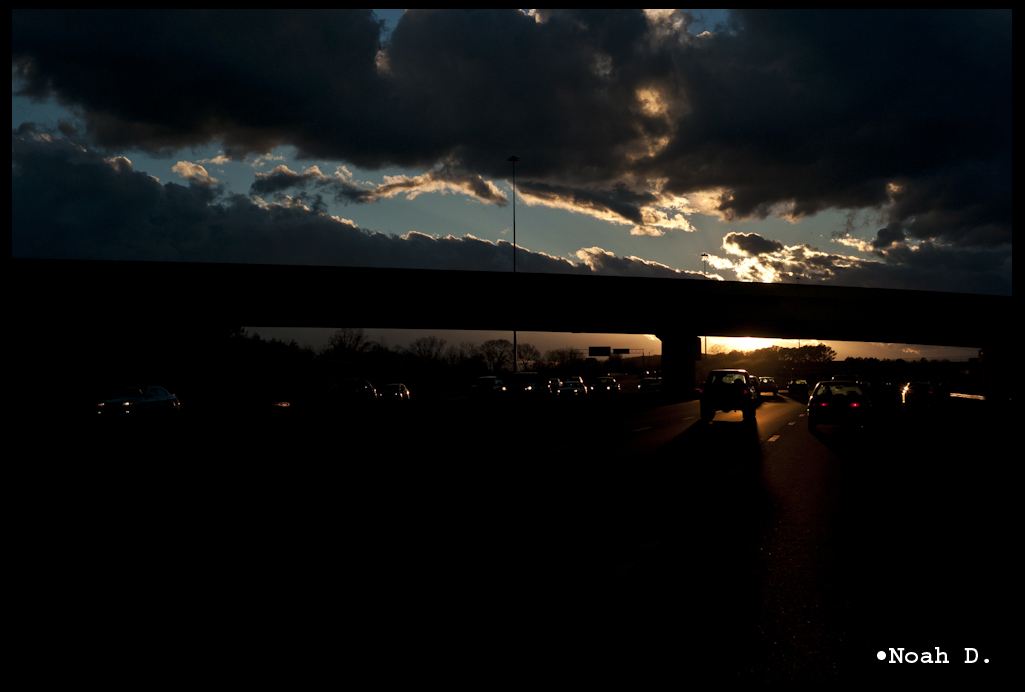**
ORIGINAL POST: 23 Feb 2008
**
“We’re not going to Sparta?” I heard someone ask as we began our adventure – two days delayed because of snow – to the Peloponnese, “Why not?” He never really got a good answer.
I was kind of disappointed to hear this as well. I mean, it would be sort of cool to see the real stuff where Leonidas lead his 300 Spartans to hold off the Persian forces and give of the Athenians a chance to amass a force large to defeat them. Remember the movie?
But upon our return from this huge peninsula / island that is western Greece, I understand now why we did not drive all the way into the southern Peloponnese to see the ruins of ancient Sparta.
It could never have been as cool as this…
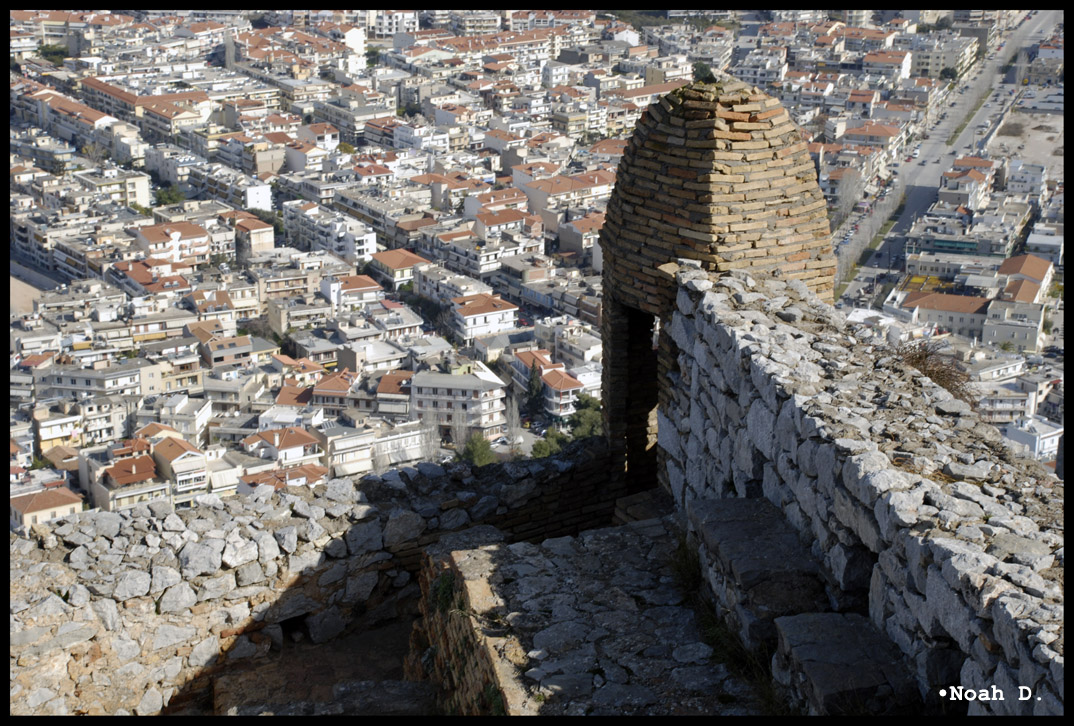
Probably some of the more profound history a guy can see in just a three day drive.
With some still depressed that Sparta was not on our itinerary, I was just thrilled to get out and see more of Greece! This trip was all by bus, though, no trains or planes.
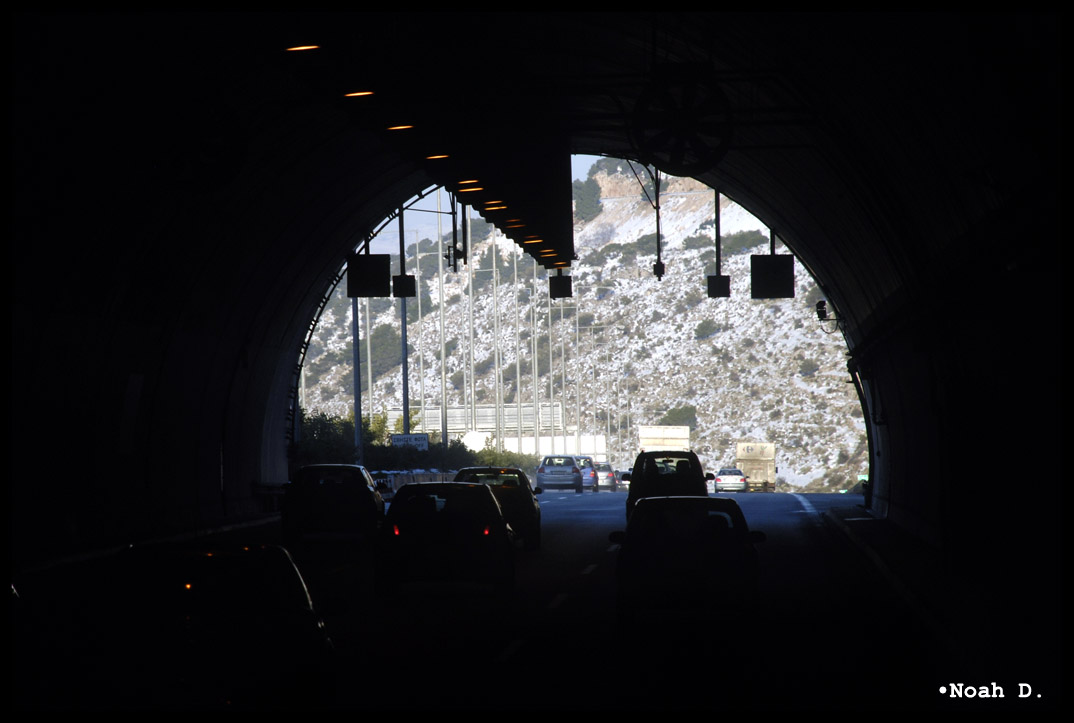
Oh, and by the way, since it was a mere 36 hours since most of Greece was under snow, we began the trip in some mighty nice snow scenes and the tops of the mountains never did clear off. So, what began with, “Whoa! Look at the mountains!” and half the bus pressing their digicams against the bus window to get a hazy picture of distant snow-capped mountains – eventually just became part of the background scenery in pictures.
Only 45 minutes into the trip, we arrived at the Corinth Canal that connects the Corinthian Gulf and Saronic Gulf. Honestly, there are only so many ways to photograph a really really really deep ditch from the bridge without getting down there in it… but… it was still hugely massive and really impressive.

Hmm… this reminds me of something I began to come to terms with during this trip:
Sometimes, it is quite literally impossible to capture some things on camera – whether it be still frames or video. To completely appreciate a place, often you must be to experience the feeling of that place. No width of a wide angle lens, no panoramic, not even a 3D image brought to you by our friends at Google Earth can help you appreciate dropping a rock off this bridge and having it take 8 or 10 seconds for it to hit the water.
Petty thing? Maybe… but it is sometimes the subtle and simple things in life that you can take with you.
At old Corinth, theater was rather impressive. And some friends recreating a nondescript scene to parody the things that were shown here 2000 years ago.
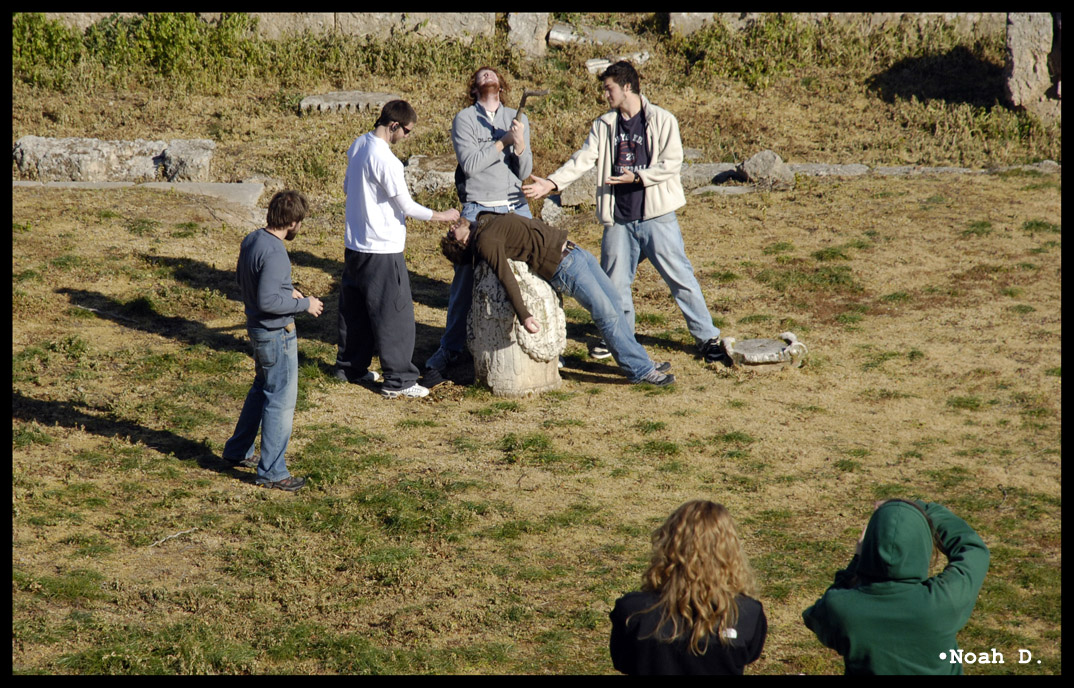
But anyways…
As everyone was leaving this site to go to the old city, I looked back down into the theater to see something unexpected. A bit random… something that might should have belonged in a theater…
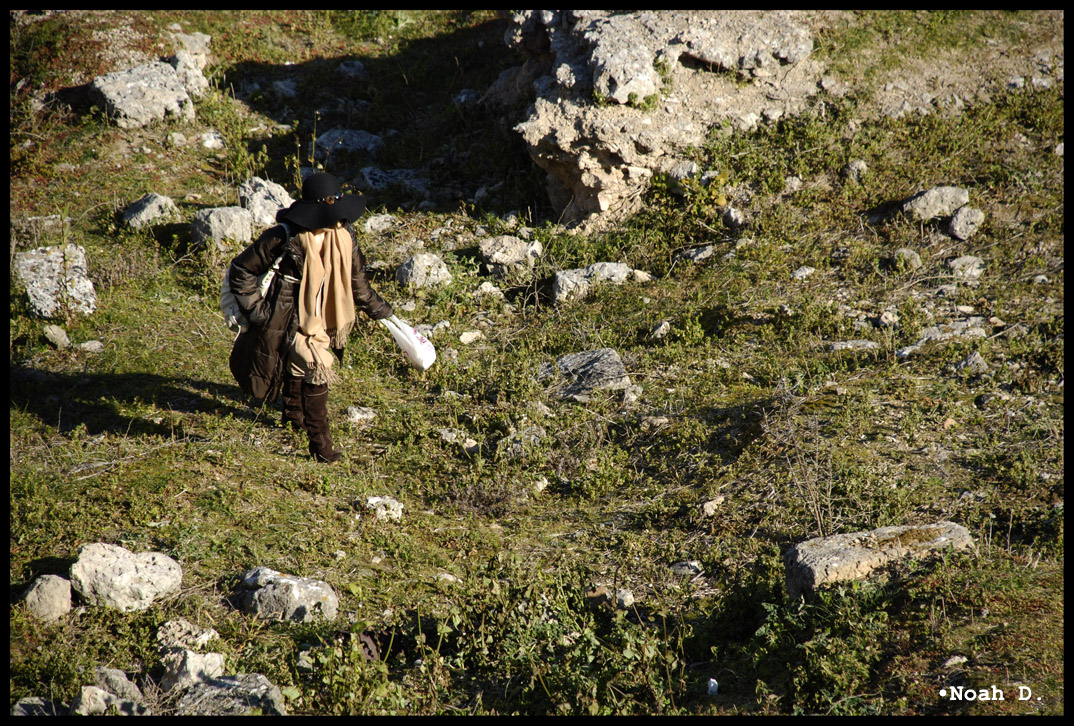
I have no idea… extraordinarily random…
But next up was the Corinth Museum and LOTS of headless statues.

Why were they headless? No, they weren’t stolen. It was a curious moment in Greco-Roman history. In an effort to be more efficient making statues and monuments for graves and honors, sculptors would carve a bunch of stock bodies clad in togas or draped in cloth… then, when a sculpture was commissioned, all they had to do was carve a head and plug it into the neck hole on the body.
How efficient…
However, this made it VERY easy for the heads to come off and be lost to time. Some are still in the museum… separate from the bodes – because there is really no way to tell where they belong.
Not all are done in this manner, by the way… some are actually broken off – but the difference in those are the fact that they have no head hole… they are simply broken off.
Moving along, we explored old Corinth.

Some moments in history you can say a person “probably came here” or “most likely was in the area and it would have made sense that he would have come here if, in fact, he was in the area”… but this is one of those moments. You halfway expect the writing on the wall: “Paul wuz here.”

The Bema of Corinth. Read Acts 18.12 and see what I mean. This is it…
And I also love stairs in places like this.

To see stairs that were here in the first century BCE and have withstood literally BILLIONS of people walking up and down them over 2000 years. Even stone steps like these have worn areas on one side where most of the traffic climbed them. Luxor Temple had steps that were 4000 years old.
Seeing the dips and shiny spots on steps really connects those ancient people to the present. In taking a walk up any of those steps you are filling the same space that a man or woman filled thousands of years in the past. Similar to the way fortifications are built to funnel an attacking force into a narrow passageway, I see stairs as a funnel for the everyday activity of people across ages of time.
Its kind of a cool thought… but anyways…
There was the obligatory temple there, too.
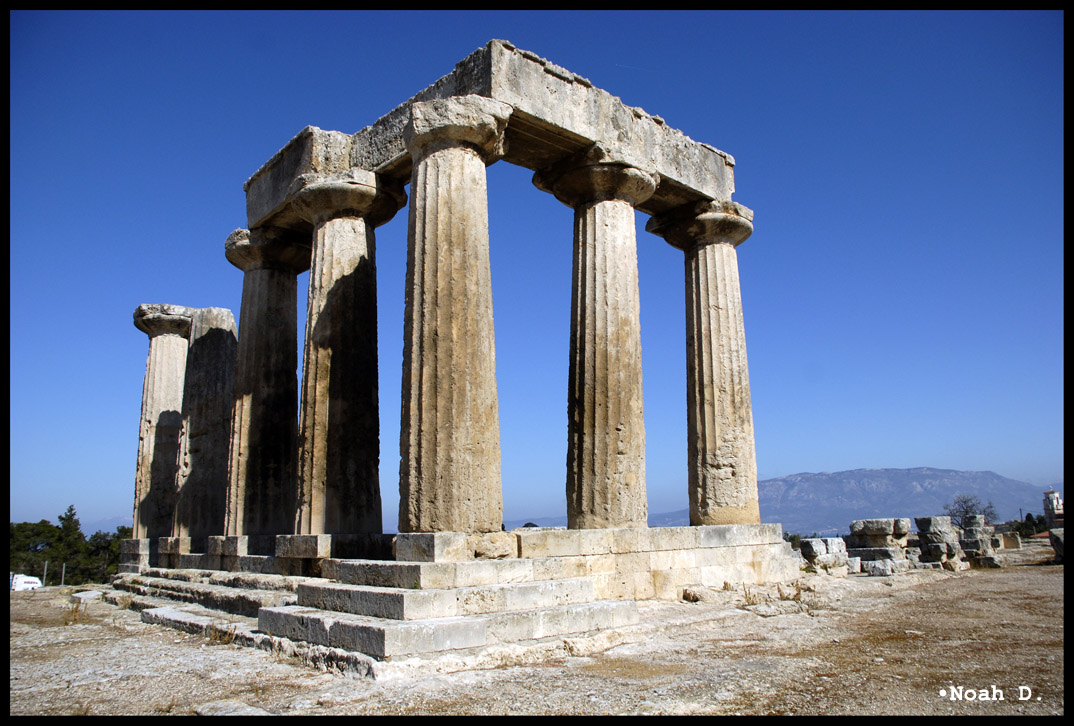
This one had columns built out of solid pieces of stone… that was its main claim to fame.
Oh yeah… and then onward to one of my all-time highlights of my trip in Greece thus far.
The Acrocorinth Fortress.
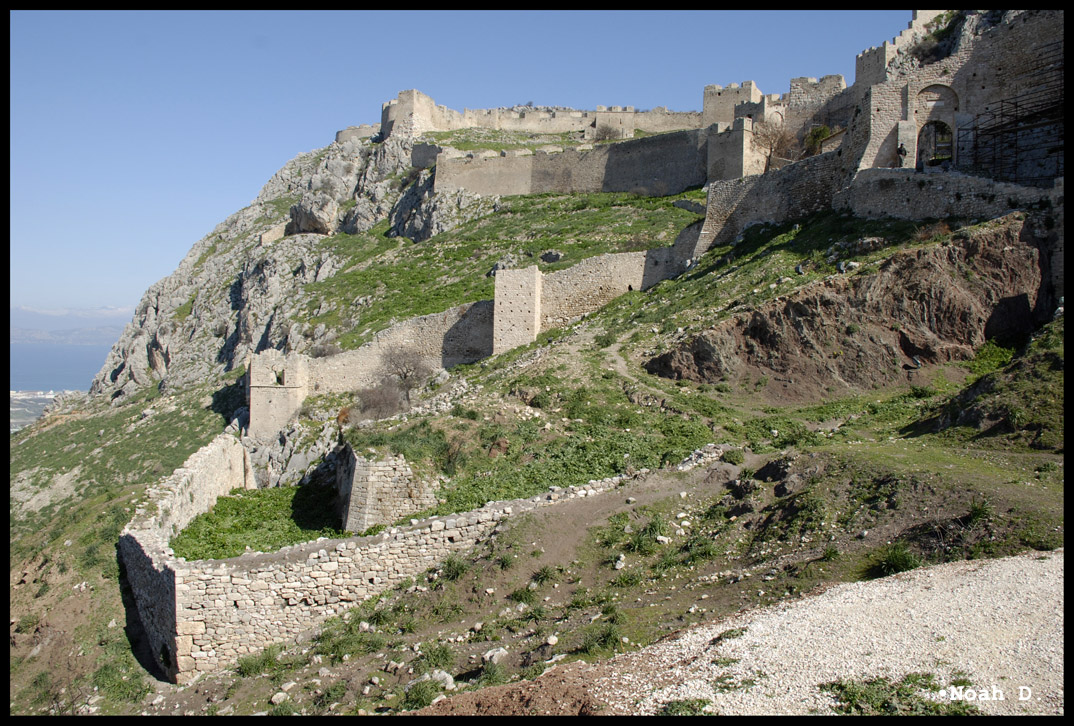
A fortress that has been under siege a dozen times and never fallen to attack. It withstood a 5-year siege before falling to starvation. On top of a 2200ft tall mountain, it was naturally fortified by cliffs on 3 sides with the western side the only accessible side… except it was blocked by three massive walls and a dry moat.

Hundreds and hundreds and hundreds and hundreds of people died in the shadow of these walls during the sieges over the centuries. Much of the structures that are seen here now were constructed during the Crusades, but have changed hands multiple times – from the Crusaders to the Greeks to the Ottomans to the Venetians back to the Greeks. So…
Not only is it in the most amazing location strategically, it is in one of the most picturesque locations for an ancient castle. Yes, taller even than the Empire State Building.

This place is so huge. This is taken from the inner keep area from which the generals would have strategized the defense of the structure.
I could have spent an entire day climbing around and exploring… see a hole? Go in it…
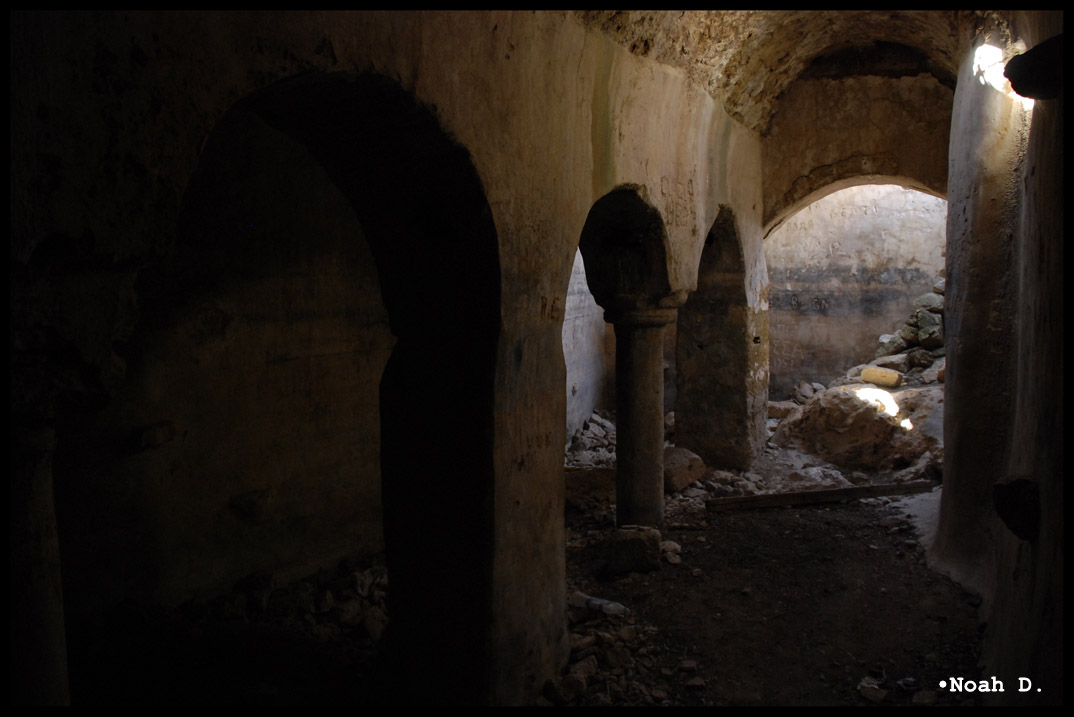
See another hole? Go down the rusty old stairs and hope they don’t break… and see a really awesome cistern with crystal clear water…
Okay… so… this room was almost completely dark… but I wanted it captured in a frame as best I could. So… a wall-braced 1.5sec exposure @ something like f/4 at 1250ISO… Like… whoa… very very dark… but I think it kinda turned out well!

Really really awesome blue water… The only light from this room was a small hole 15 feet up in the ceiling above the water. You can see the yellow sunlight on the door frame.
Anyways… it was a moment that was really impossible to capture on film… something I won’t soon forget.
And yet ANOTHER thing that is just too massive to capture on film is the Odeon of Asclepius. Walk 200ft away and STILL not get the whole thing in… click on the image and get the large version and see the people on the top row…
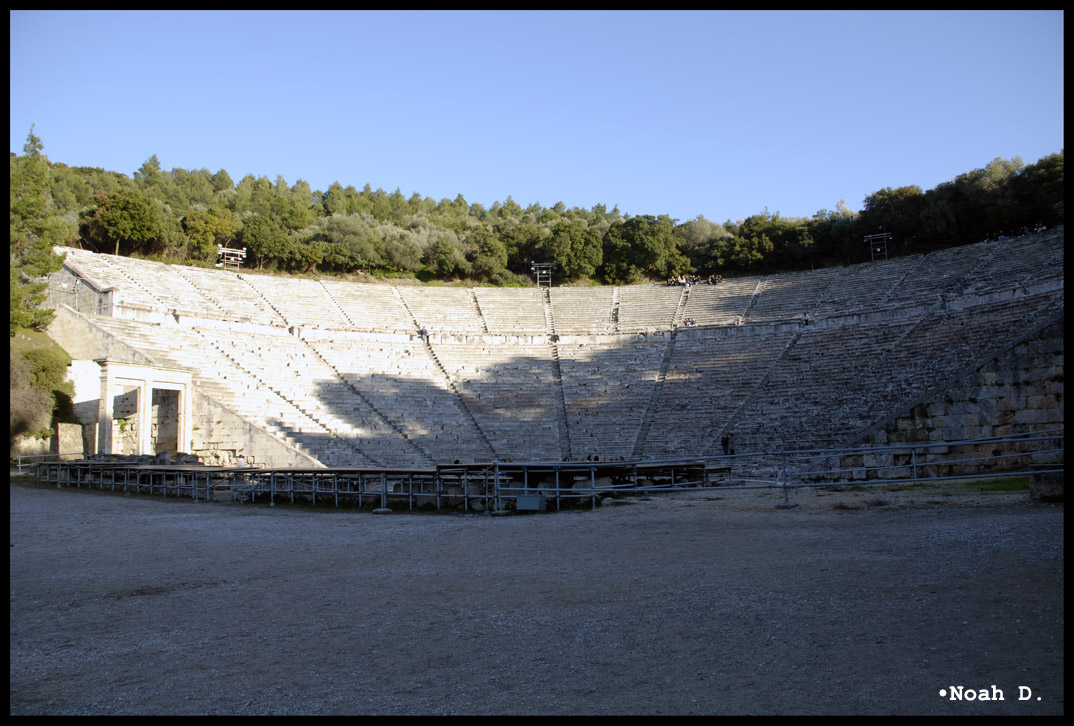
Yes, it is THAT huge… and found mostly intact when they excavated a (rather large) hill.
But now, they hold a number of concerts there during the summer.
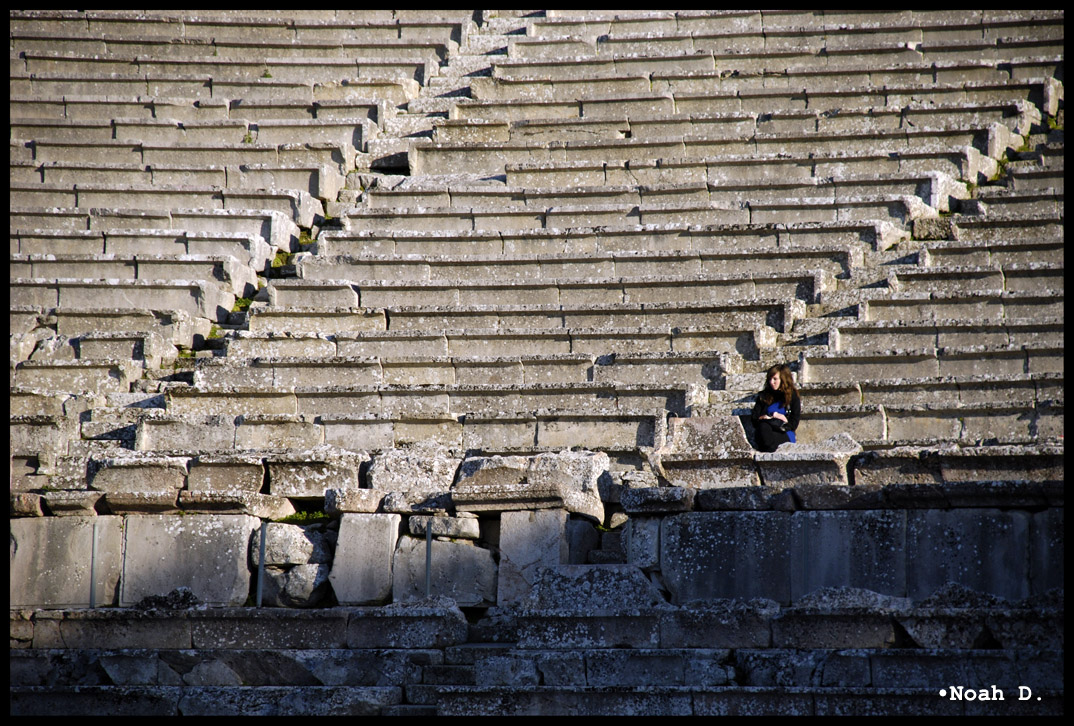
And so ended the first day of our excursion into the Peloponnese.
Sorry if half the images are still loading even after this much time. Lots and lots of pictures.
Maybe I should split it into two postings. Well… maybe not…
—————————————
The next day began with a short drive to Nafpoli to another castle there. Could this one be better than the Acrocorinth?

Well… this was pretty darn close. And it was just huge as well. It was quite newer than the citadel on top of the Acrocorinth… It had seen more use in the age of gunpowder; however, it still had all the impenetrable staircases and bottleneck corridors and holes to pour molten tar on attackers that a fortress of the bow-and-arrow wars would have.
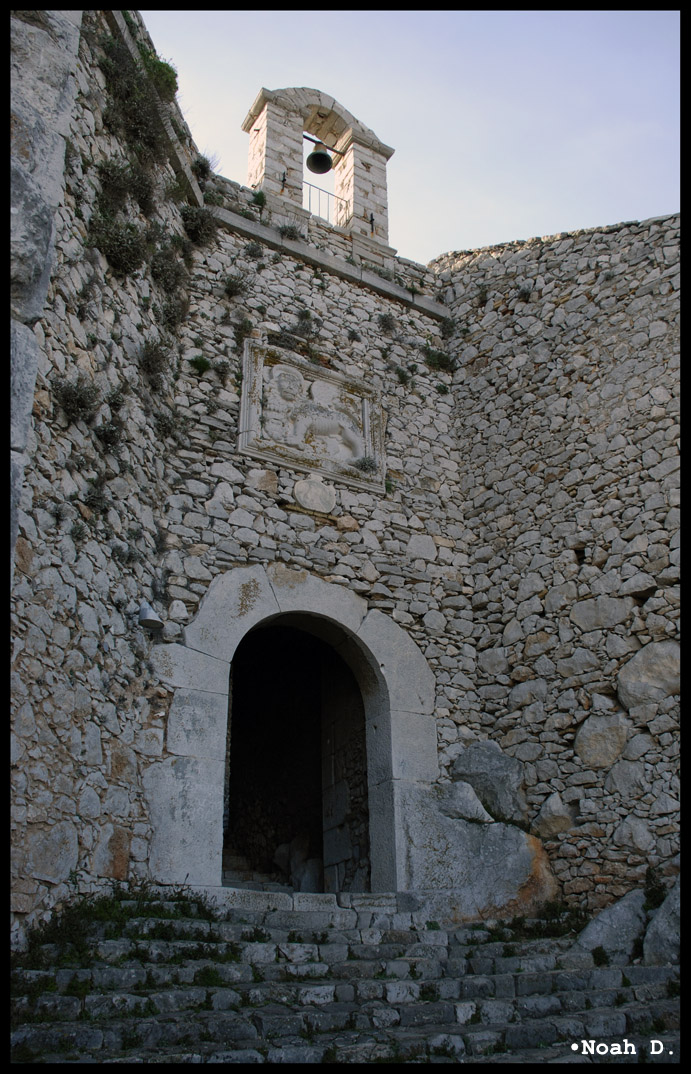
This fortress had a number of attacks on it – but nothing as huge as the 5-year siege on the Acrocorinth. A traitor (who happened to be the castle’s designer) gave away its secret and the castle fell in about a week.
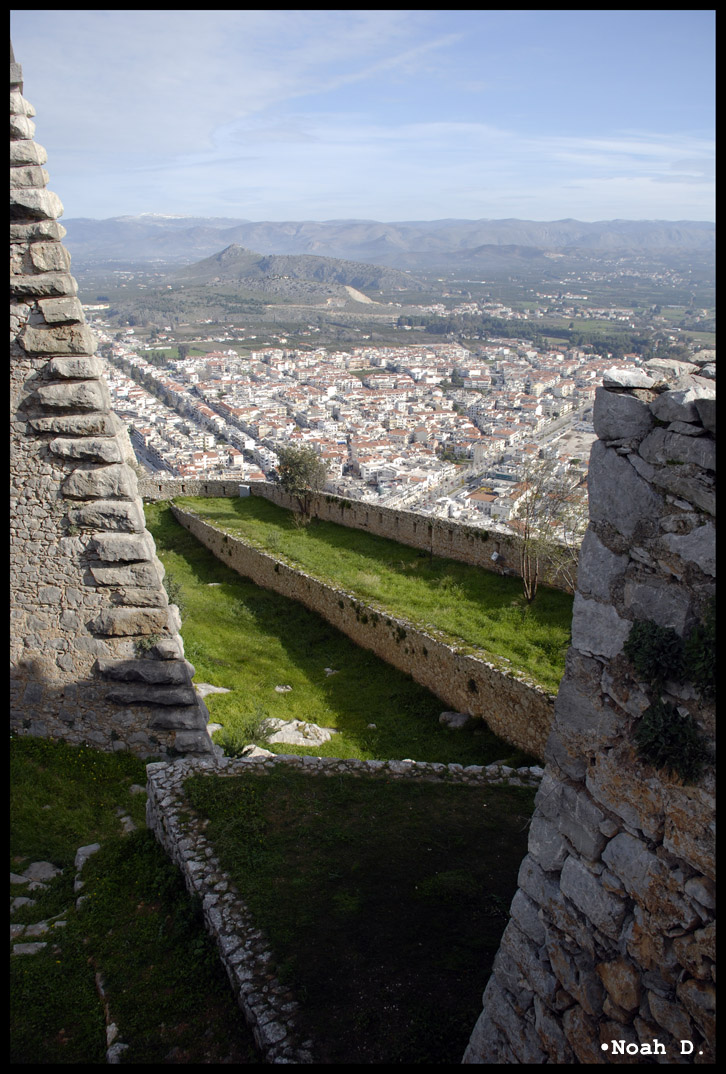
Oh yeah… and on the opposite side of the modern city is an island fortress. Back in the day of wooden ships, there would be a chain stretched across the entrance of the bay from this island to the mainland (toward the bottom left) and it would prevent unwanted ships to enter the harbor. The other side (upper right side) was only a few feet deep and was naturally impassible.
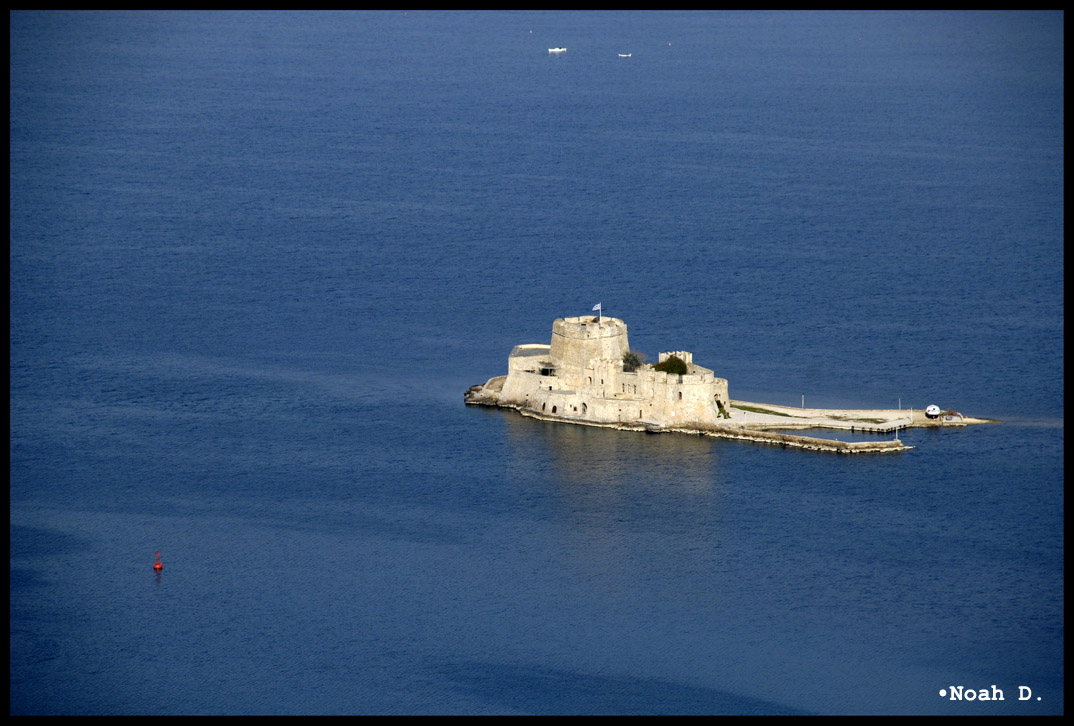
And then the local executioner lived there…
So…
This fortress had just as many little holes as the last. I really could have spent an entire day here, as well.
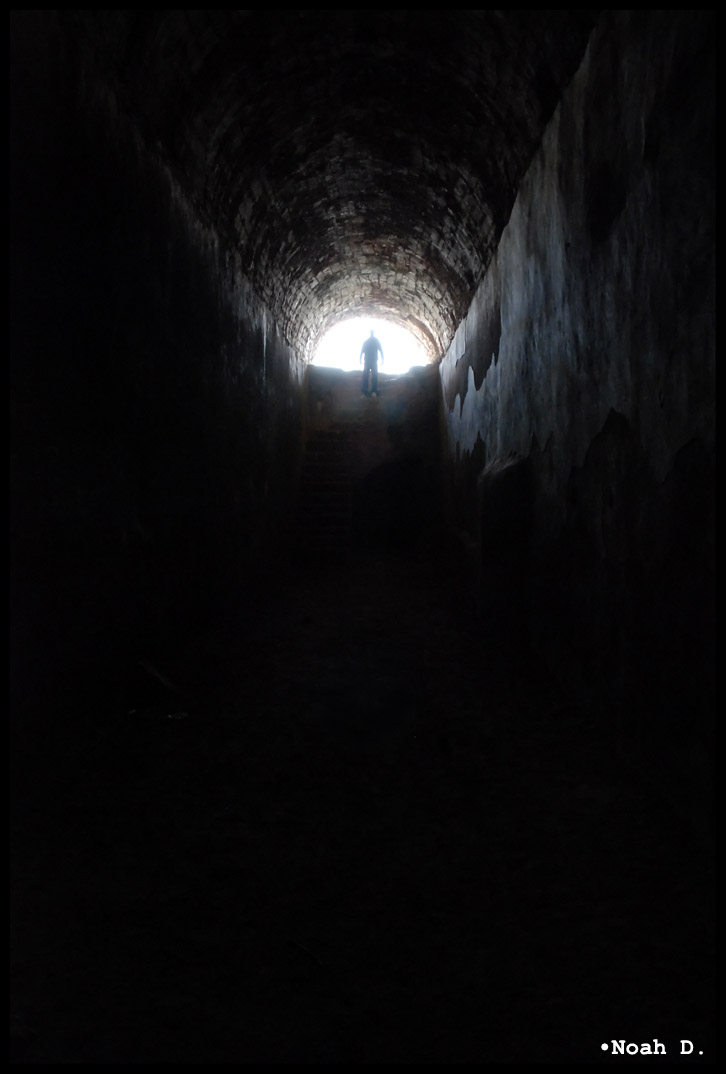
See it. Love it.
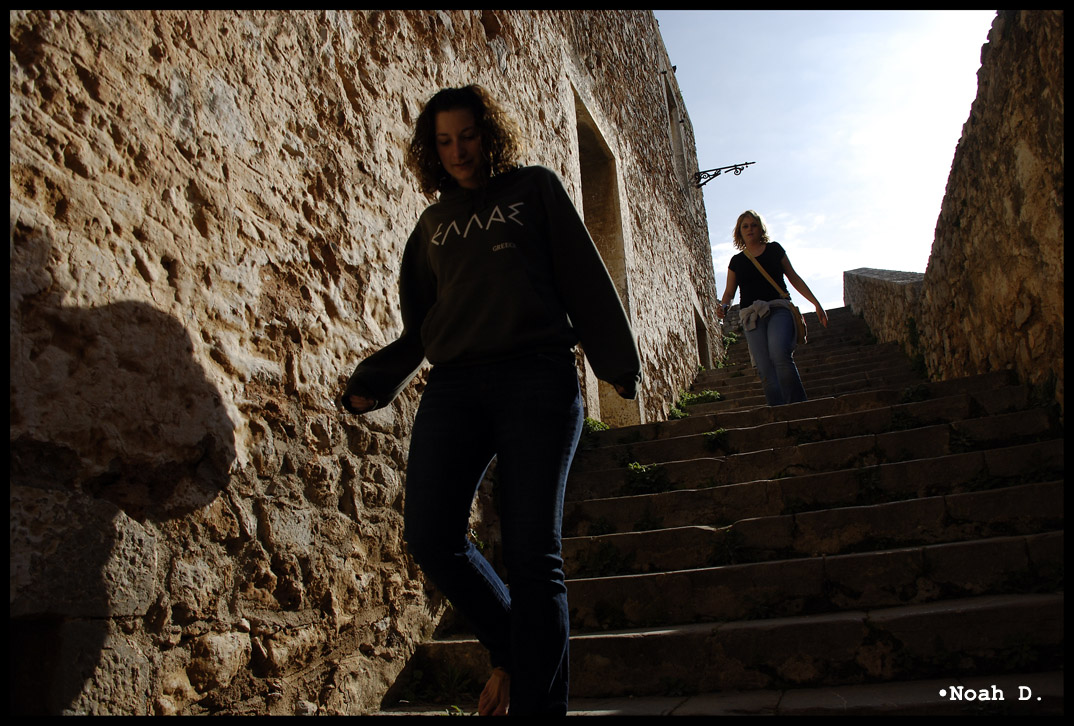
And then as everyone is headed to meet up to leave, a few of us still are enjoying ourselves doing other things. I definitely want to go back… this is really incredible stuff…
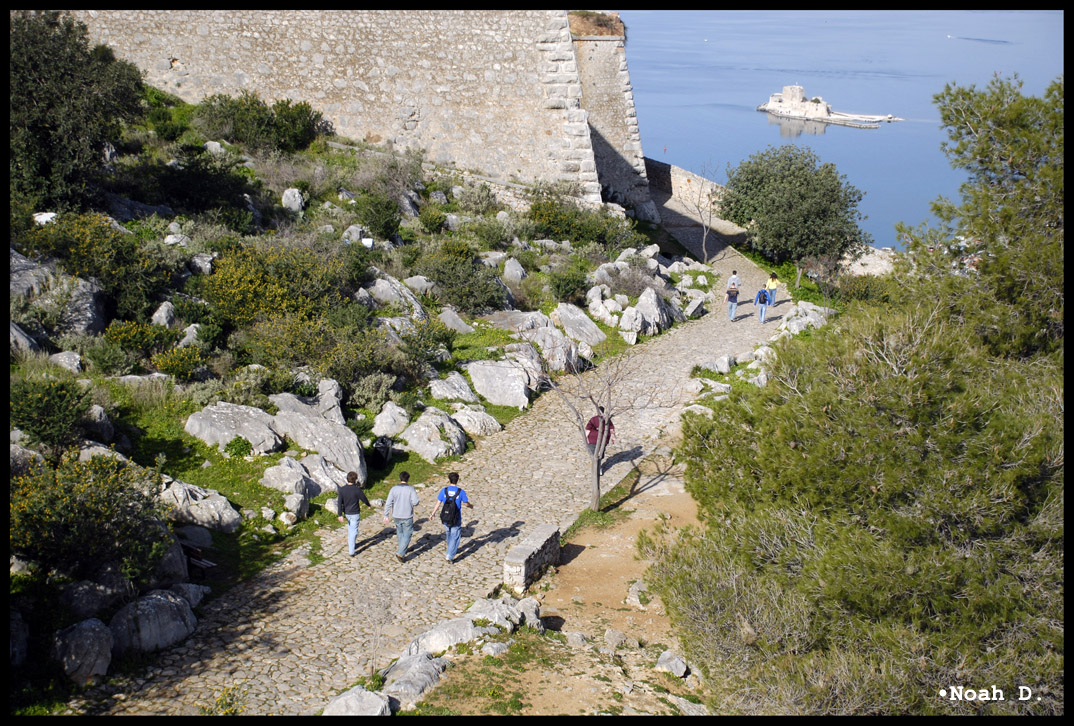
Alright… if you insist… we’ll go…
There are something like 857 steps to the bottom of the hill. That is a lot of steps.
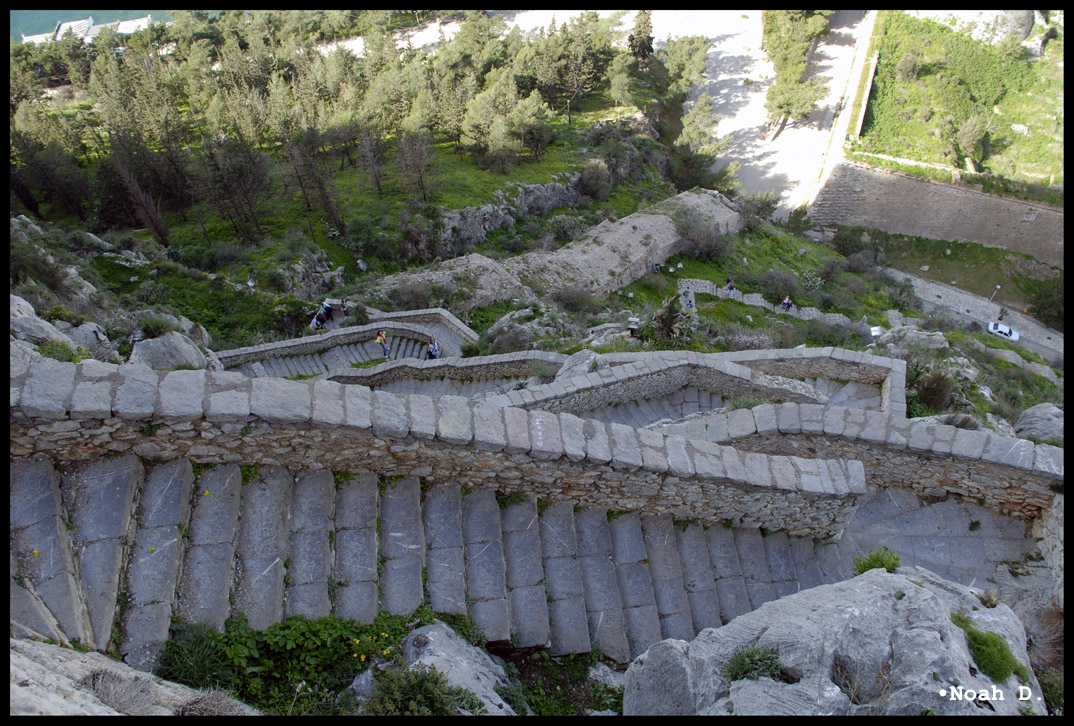
Though, in our now-classic way, a couple of guys are not known for staying on the well-traveled paths. See a hole? Go in it… and find really neat-o stuff… I’ll be there to take a photo of it…
Even when everyone else is almost at the bottom…
…oops…
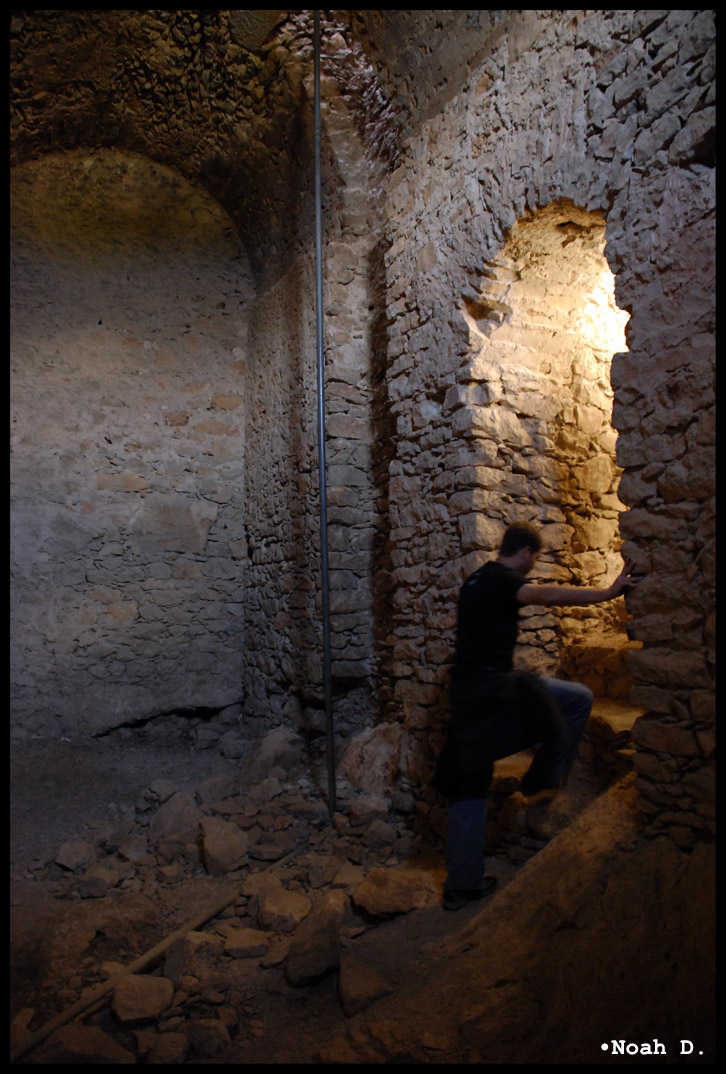
No worries… they won’t leave us…
We drove out to Mycenae, the fortress of such historical greats as Agamemnon from the Iliad. First to a burial chamber… the wide angle image makes it look a bit smaller than it was… it is deceptively large…
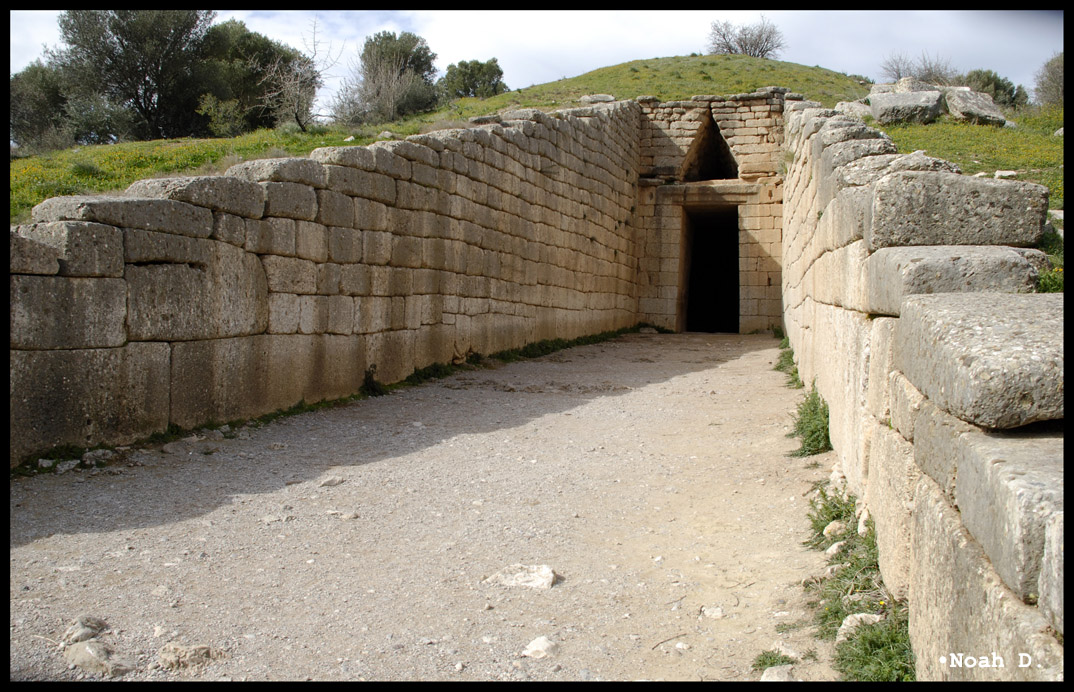
I like silhouettes.

This area was excessively much older than the other previous fortresses – therefore not much really stands except the massive stone walls… and the Lion Gate.
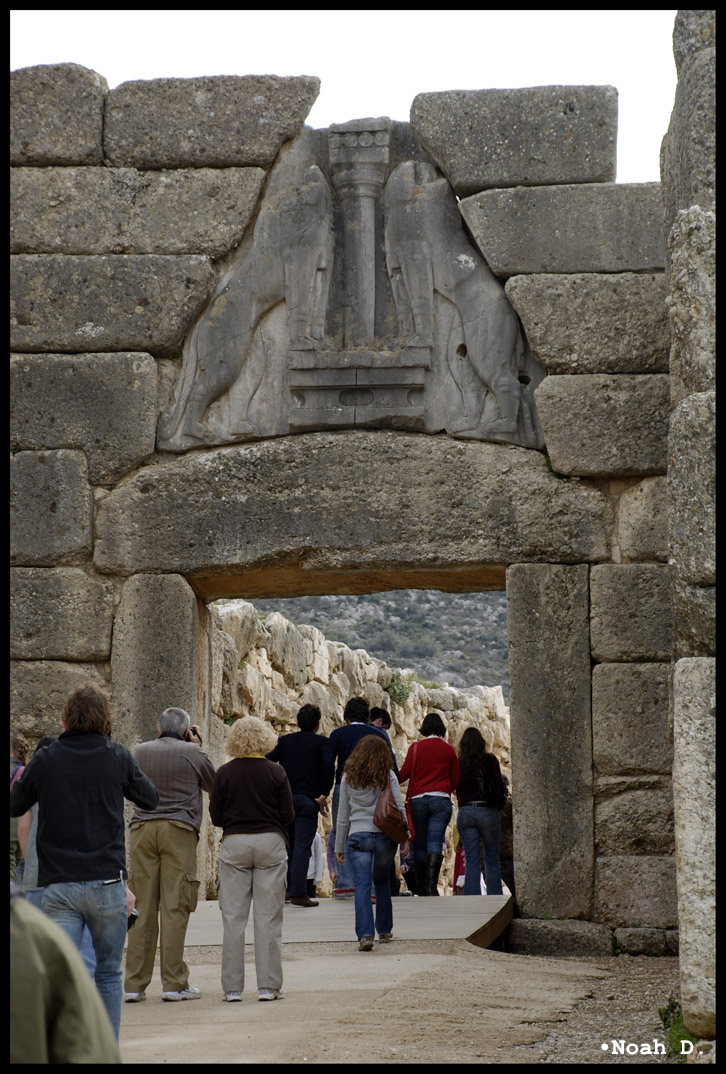
I kinda think this is getting a little bit like a tour of Greece. See this… see that… see this… don’t see that… sorry…
So, at the bottom of the water cistern it is completely black. But all of us were down there. Of course you have to take a picture of it… yeah, that’ll be a great success! Take a picture that the camera thinks is of the inside of the lens cap.
Well… anyways…
How to remedy this? Turn the camera back up the stairs at people trying to take pictures of the darkness – 6 seconds at a time. Pretend its an off-camera flash. There is NO ambient light so the shutter speed doesn’t matter. Set the aperture just like normal.
———————————–
Next day. Olympia. Started at the museum.
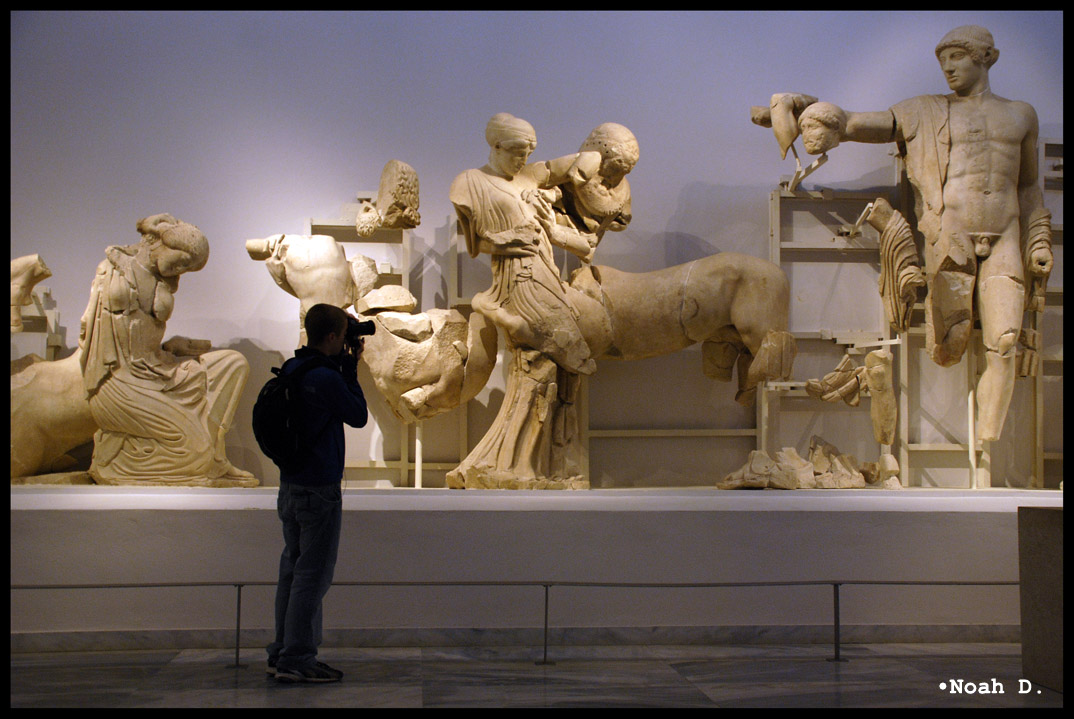
Really big statues that were on the pediment of the Temple of Zeus.
And really tiny ones given as votive offerings to the gods.
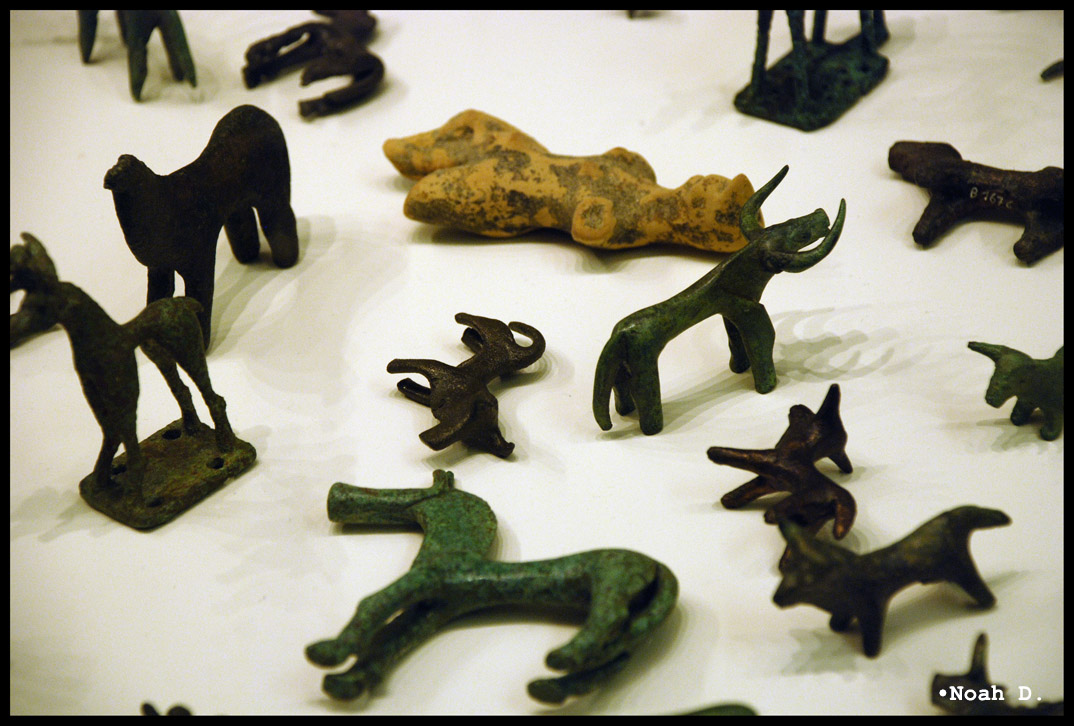
And, by the way, during our stays at all of these sites, we are given on-site lectures. Included in this is extensive note-taking which we ARE tested on. Does it sound bad? It really isn’t… there is so much information about all of these locations, it would be impossible to remember it and a waste of time for the instructors to tell us. So… now 39 days into this trip, I have a Moleskine notebook well over half full.
Most of us do…
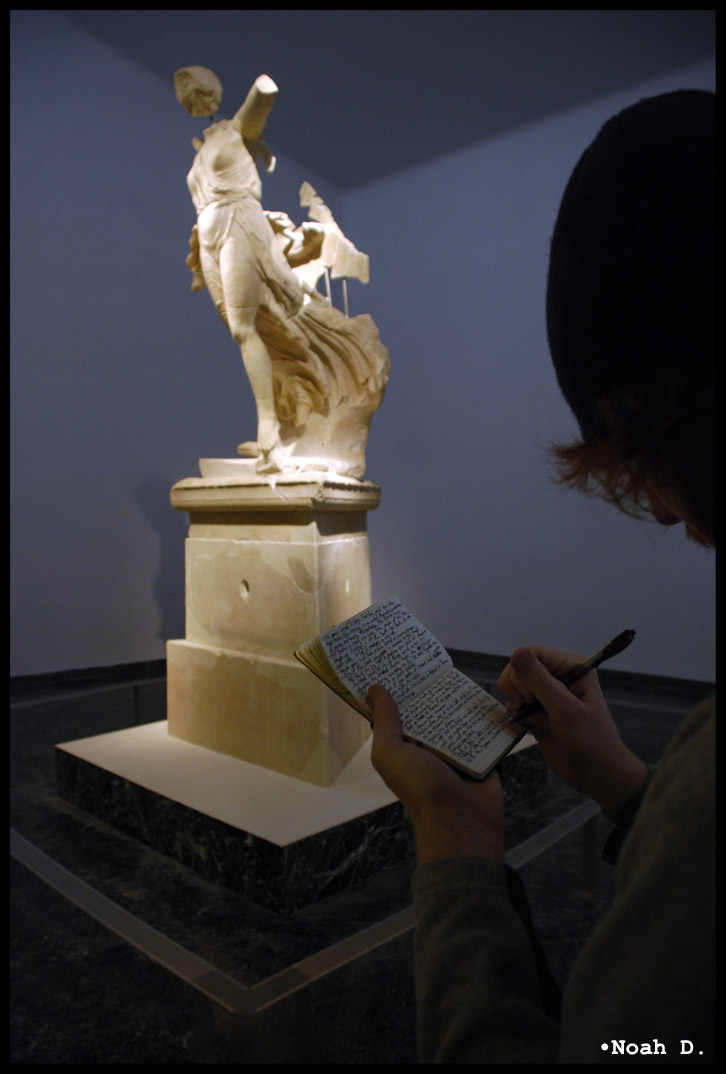
And then one of the masterpieces of Ancient Greek sculpture.

“Hermes and the Infant Dionysus”
Comparable to Michaelangelo’s “David” – except almost THREE TIMES as old…

I really love that photo…
Otherwise, the outside part – where all of the things in the museum came from – was a mighty majestic thing.
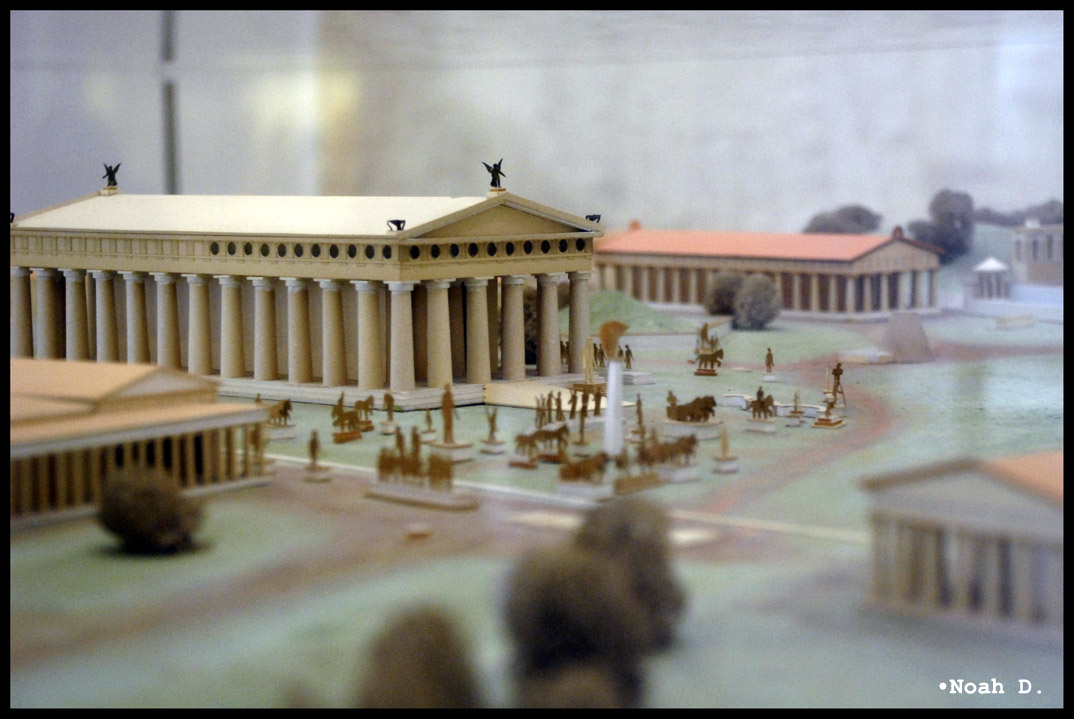
Then…
And now…

Oh yeah… and in the span of this 39 day trip, I’ve seen 3 of the 7 Wonders of the Ancient World… or at least… where they were…
This was the Temple of Zeus at Olympia where the colossal statue of Zeus sat. And the workshop of Phideas who constructed both this statue of Zeus… and the statue of Athena that stood in the Parthenon on the Athens Acropolis.
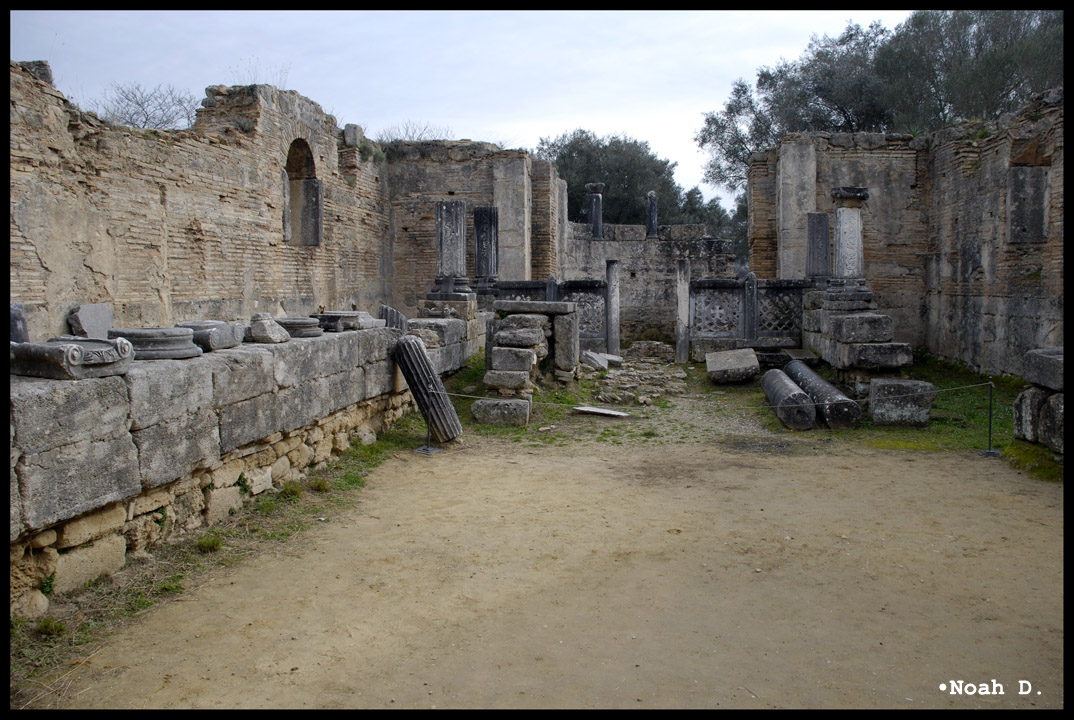
Oh yeah… and in a stroke of genius, we use technology to enhance our experience of these sites: we all use personal amplification sets. They are small, remote radios that run on a common channel that our instructor has the sender. The instructor gets to talk in a normal voice and we can walk as far as 100ft away and still hear every word he/she says.
Such as… our instructor and the rest of the group outside Phideas’ workshop… and me inside it…

“How did you get in there!?” my friend Danielle asks, looking confused.
“Stairs in the back.”
I love love love being off the beaten path.
I can just imagine these two guys being brothers or very good friends and deciding to see the 7 Wonders of the Ancient World… so they head off and do it.
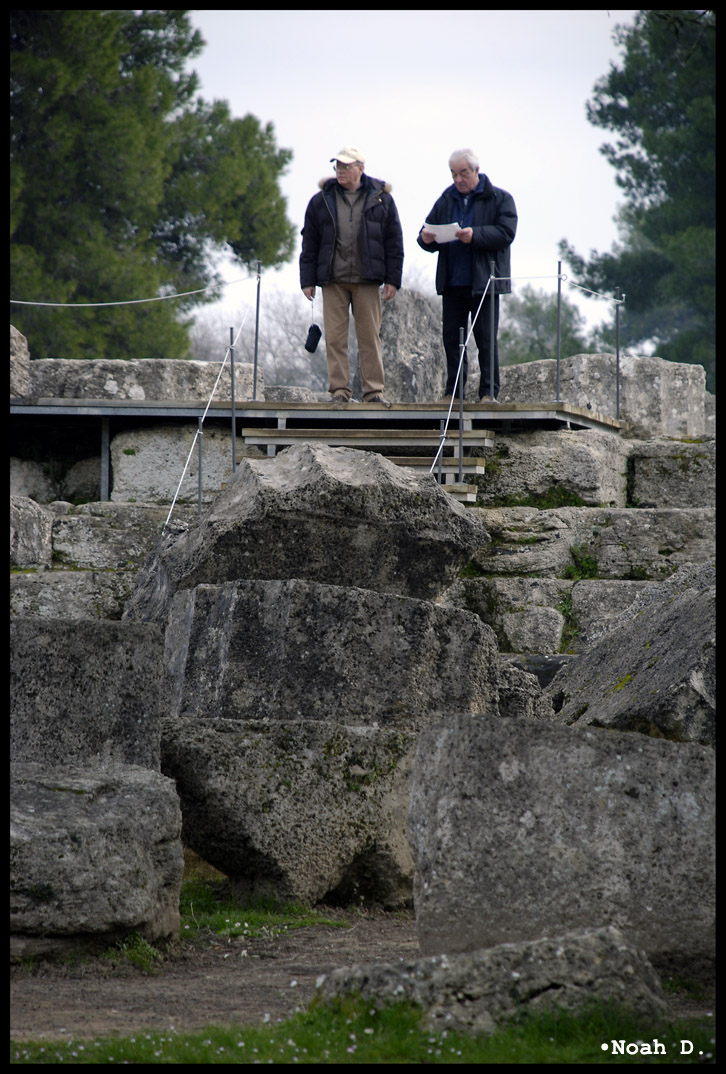
Oh yeah… and that shows you some scale of the pieces of the columns that made up the Temple of Zeus… yes… it was really really huge…
And FINALLY… we came to the Olympic Stadium… yes… it was THAT Olympic Stadium.
Go run 193 meters… I’ll take pictures… Yeah… halfway down there its a little farther than it looks… I think they say 193 meters so we don’t really understand how far it really is… 633 feet…
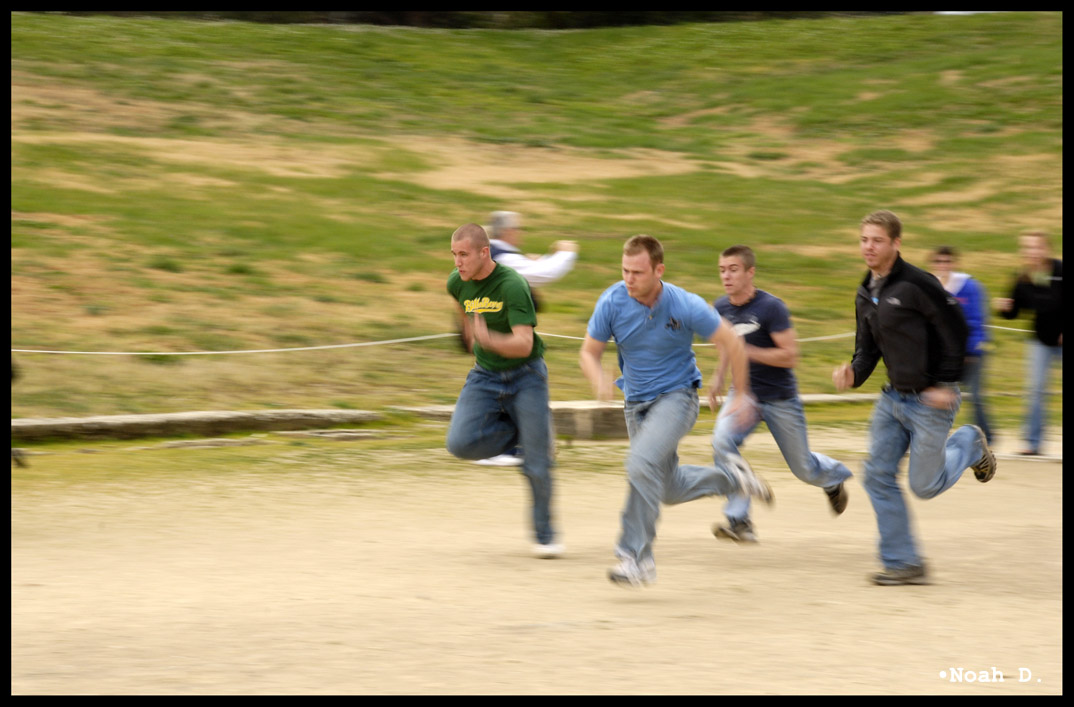
You do that…
Good times in the Peloponnese…
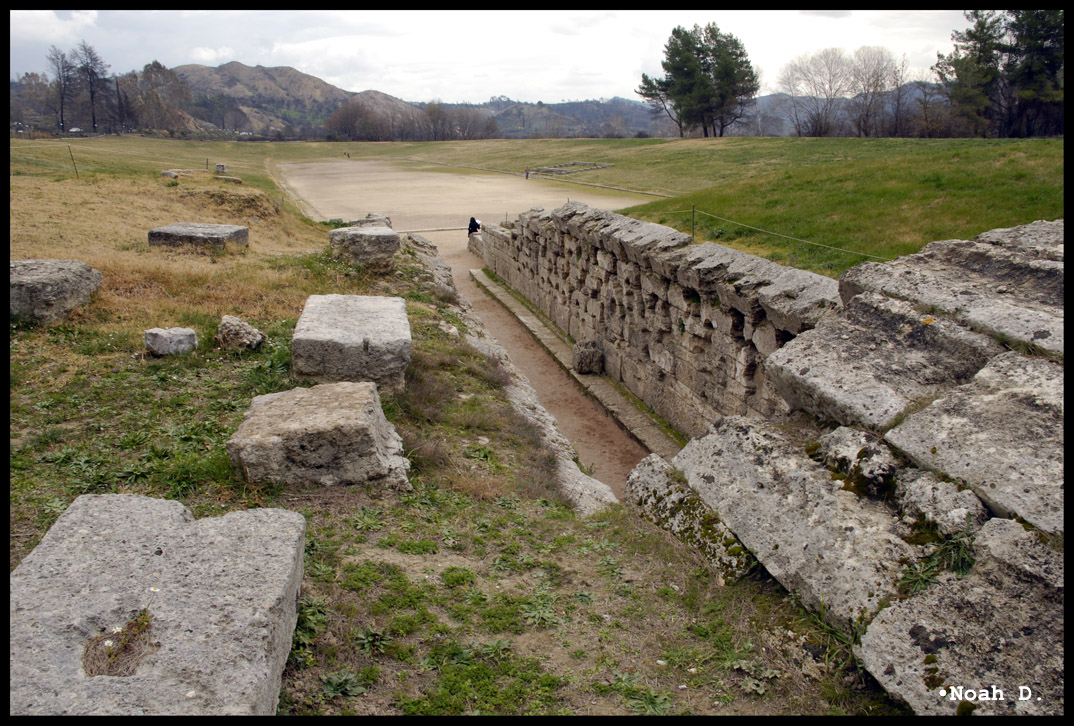
So, we didn’t see Sparta… but I am completely okay with that.
From the streets where the apostle Paul walked to the impenetrable Acrocorinth to the nooks and crannies of a Venetian castle… to the seat of the 3700-year old Mycenaean civilization or the location of the original Olympics and a wonder of the ancient world…
…I have not and will not be disappointed by any part of this trip.
It solidifies the words by the venerable Tony Bourdain:
“Whatever happens, its going to be good.”
My life in Greece is a profound testament to that fact. Some people wonder if returning to America will make them cynical to the taken-for-granted way of life that America seems to live. I can also see how some people return from Greece feeling a little negatively about the “American Dream” and how people have no idea of how blessed they are.
I also feel sad to see some people come back from their semester abroad completely unchanged by their experience besides tallying things onto their resume and going on with their school.
People don’t do things like this. People don’t have the opportunity to spend 4 months in a foreign country and get to know the people, the culture, the public transit system – and then travel to the locations that made history the way it is.
To any of my friends that read this – take nothing for granted. Take every opportunity you can afford… and even some you can’t.
Because “it makes no difference whether [a man] is young in age or youthful in character; the defect is due not to lack of years but to living, and pursuing one’s various aims, under sway of the feelings; for to people like this knowledge becomes as unprofitable as it is for those who know what is right but fail to do it.”
Thank you Aristotle. Couldn’t have said it better myself.
Stay tuned,
~Noah D.





